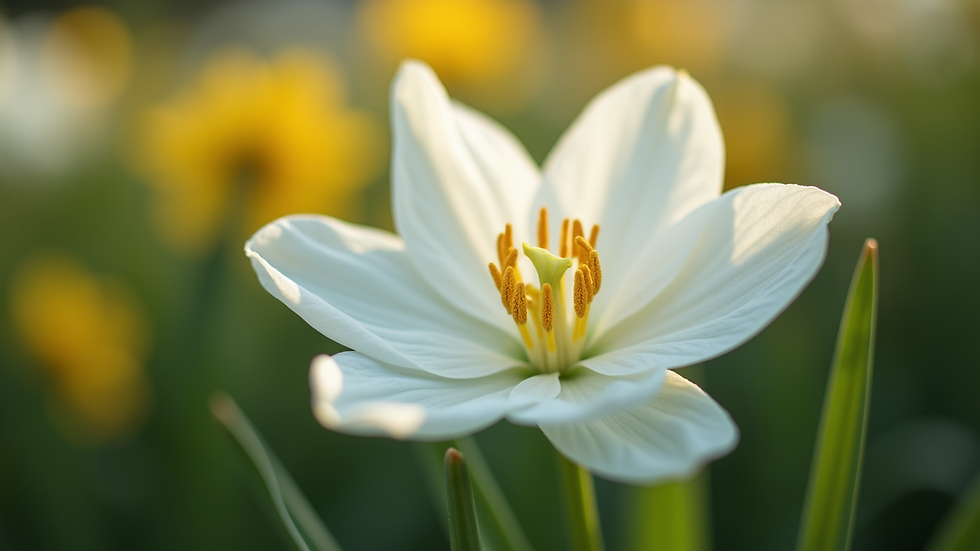How Colors Shape Our Lives and Reveal Who We Are
- Josif TOSEVSKI

- Aug 19
- 3 min read
Colors are like the secret agents of the visual world, sneaking into our everyday lives and messing with our heads. Each color has its own mission, ready to stir up our thoughts and toy with our emotions. Enter the world of color psychology, where scientists don lab coats to unravel the mysteries of how these hues hijack our brains. This intriguing field reveals how a splash of color can help us make sense of our surroundings and even give us a peek into the quirks of our personalities. So, grab your imaginary paintbrush, and let's dive into the wild and wacky world of colors and their sneaky influence on our lives.
The Power of White
White is often viewed as a symbol of purity and calmness. It evokes feelings of freshness and is linked to new beginnings. For example, in many cultures, brides wear white gowns on their wedding day, representing innocence and hope for the future.
In the healthcare sector, white uniforms worn by doctors and nurses instill trust and professionalism. Research indicates that wearing white can enhance our feelings of intelligence and confidence. In fact, a study conducted at the University of California found that people wearing white lab coats performed better on attention-related tasks, highlighting the psychological impact of this color.

The Passion of Red
Red is a color that radiates passion and energy. It’s no wonder that many women wear red dresses or bold red lipstick to make a statement. This vibrant color can stimulate feelings of excitement and draw attention.
However, red also carries associations with danger, as seen in warning signs and red traffic lights. Interestingly, research by the University of Rochester found that exposure to red can heighten anxiety levels, especially in competitive situations. For instance, students who received exams graded in red ink reported increased stress compared to those graded in green.
The Brightness of Yellow
Yellow is known for being the brightest color visible to the human eye, often linked to happiness and optimism. A study by the Institute for Color Research found that yellow can even enhance mental activity and stimulate the nervous system, making it a powerful mood booster.
Despite its uplifting qualities, too much yellow can lead to feelings of irritation. For example, restaurants often use yellow to attract diners, but aggressive yellow tones can create discomfort when overused. A balanced use of yellow can lead to a cheerful and invigorating atmosphere.
The Calmness of Blue
Blue is often associated with calmness and stability. It’s a favorite color for both men and women and is widely used across various settings, from corporate offices to homes.
Different shades of blue evoke different emotions. Lighter blues can foster feelings of peace and serenity, while darker blues convey professionalism and dependability. A study by Color Psychology found that workplaces painted in blue can enhance productivity by 15%, illustrating how this color can positively affect our work environment.
The Harmony of Green
Green represents nature, balance, and growth. It’s frequently used in branding for eco-friendly products to signify sustainability.
Research shows that surrounding ourselves with greenery can reduce stress and improve our overall well-being. A Japanese study discovered that spending time in green spaces can reduce cortisol levels, the stress hormone, by up to 30%. Green not only promotes relaxation but also inspires creativity, making it a powerful color in our daily lives.

The Complexity of Black
Black presents a complex range of associations. While it can signify elegance and authority, it is also linked to feelings of sadness or grief. Wearing black can often make a person appear more powerful and sophisticated, which is why it’s a favorite color for formal attire.
However, whether black evokes feelings of empowerment or isolation can depend heavily on the context. For example, throughout history, black has been used at both celebrations and funerals. This duality shows how context influences our perception of this color.
The Power of Colors
Colors are not just visual phenomena; they significantly shape our emotions, perceptions, and identities. By understanding the meanings behind different colors, we can make better choices in our daily lives, whether it’s selecting our clothing, decorating our living spaces, or even branding our businesses.
Being mindful of how colors affect us allows us to harness their power for good. The next time you choose an outfit or paint a room, think about what colors resonate with you and what they communicate about your personality. Embracing the vibrant world of colors can lead to a deeper understanding of ourselves and enhance our overall quality of life.



Comments